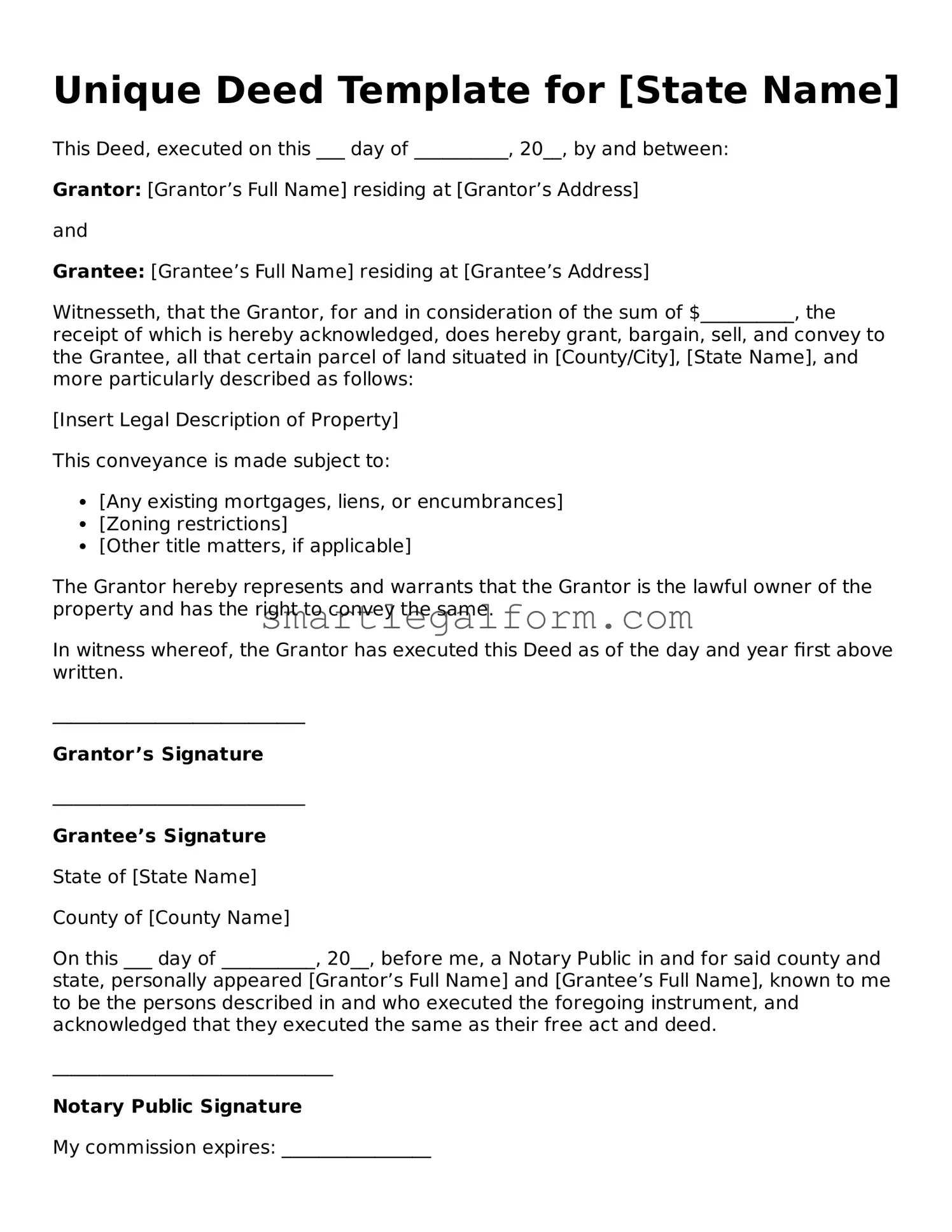Unique Deed Template for [State Name]
This Deed, executed on this ___ day of __________, 20__, by and between:
Grantor: [Grantor’s Full Name] residing at [Grantor’s Address]
and
Grantee: [Grantee’s Full Name] residing at [Grantee’s Address]
Witnesseth, that the Grantor, for and in consideration of the sum of $__________, the receipt of which is hereby acknowledged, does hereby grant, bargain, sell, and convey to the Grantee, all that certain parcel of land situated in [County/City], [State Name], and more particularly described as follows:
[Insert Legal Description of Property]
This conveyance is made subject to:
- [Any existing mortgages, liens, or encumbrances]
- [Zoning restrictions]
- [Other title matters, if applicable]
The Grantor hereby represents and warrants that the Grantor is the lawful owner of the property and has the right to convey the same.
In witness whereof, the Grantor has executed this Deed as of the day and year first above written.
___________________________
Grantor’s Signature
___________________________
Grantee’s Signature
State of [State Name]
County of [County Name]
On this ___ day of __________, 20__, before me, a Notary Public in and for said county and state, personally appeared [Grantor’s Full Name] and [Grantee’s Full Name], known to me to be the persons described in and who executed the foregoing instrument, and acknowledged that they executed the same as their free act and deed.
______________________________
Notary Public Signature
My commission expires: ________________
